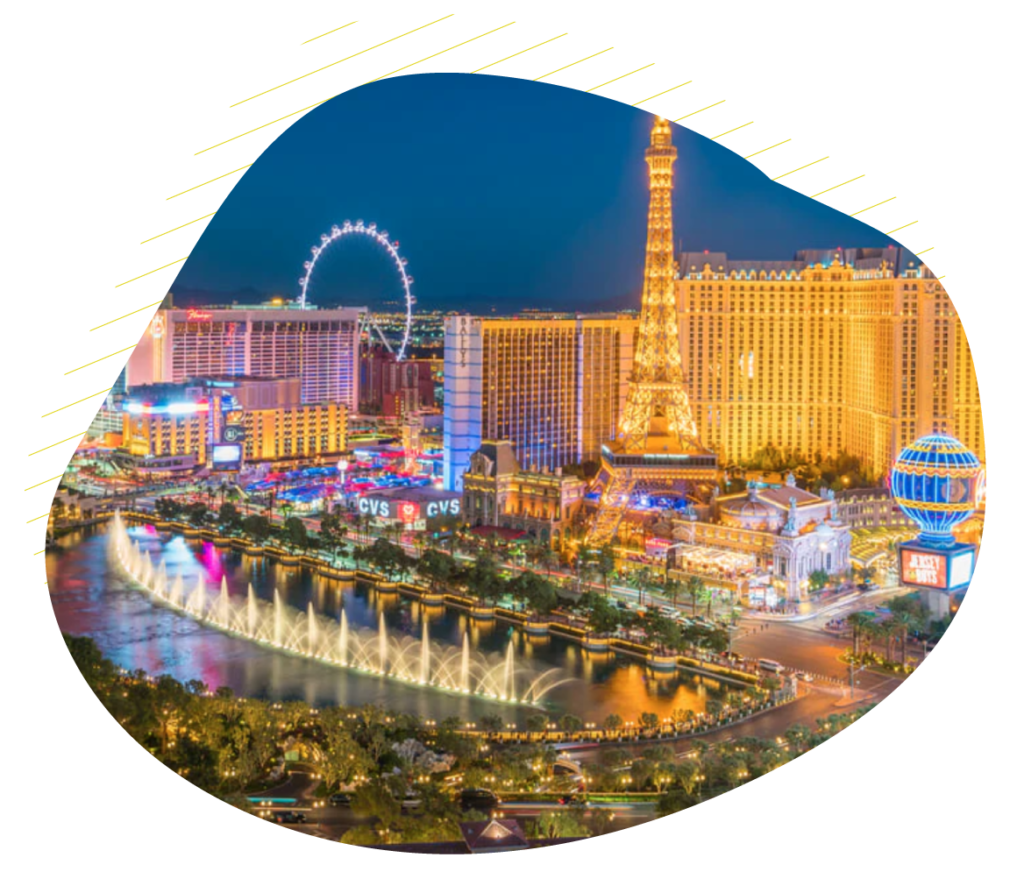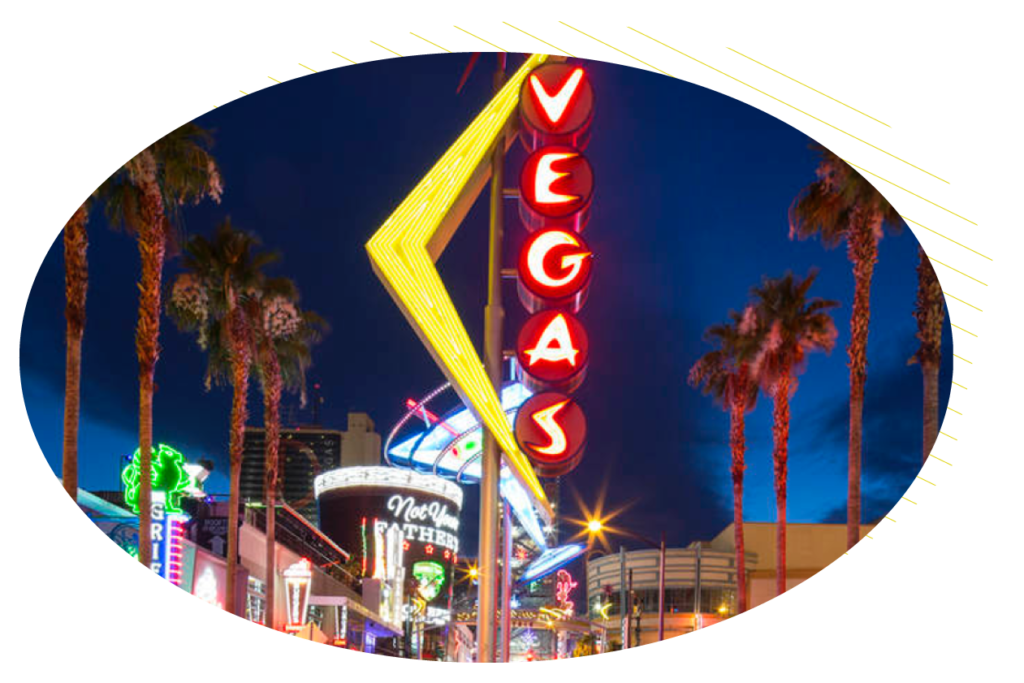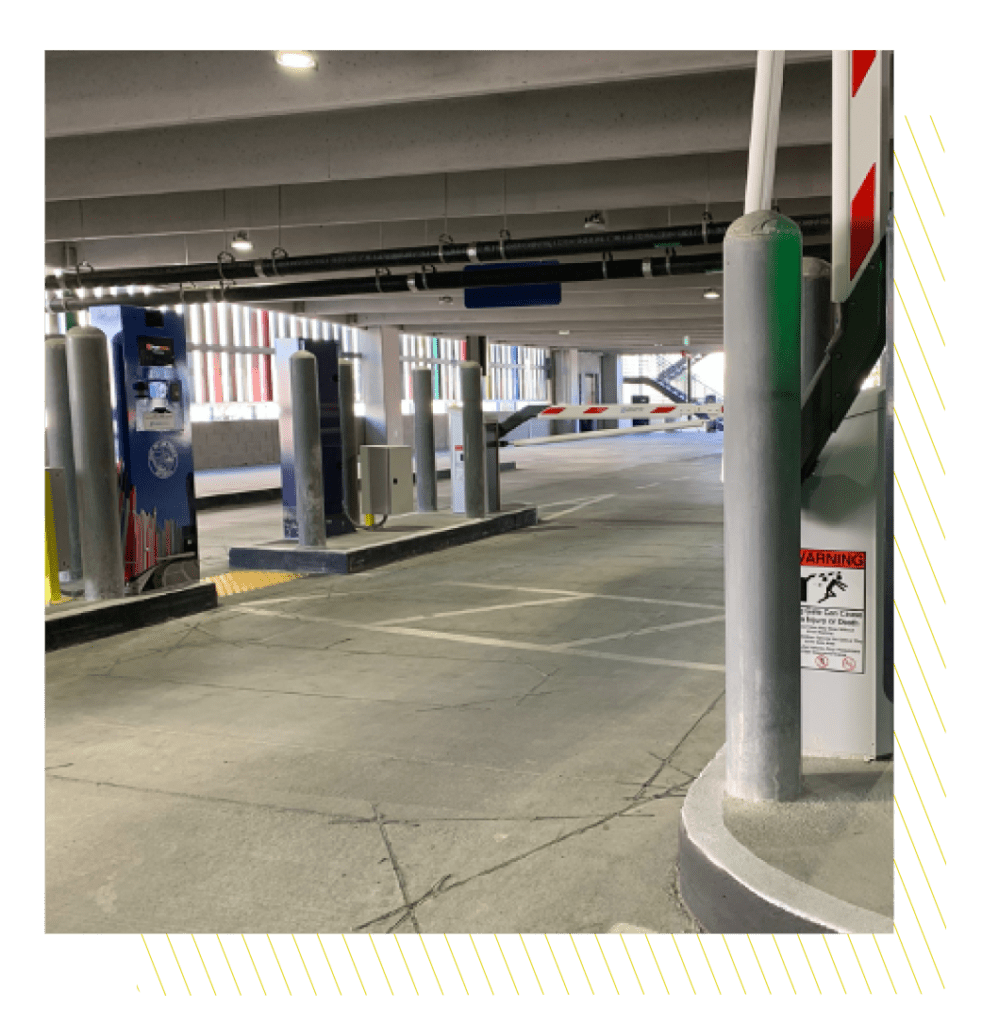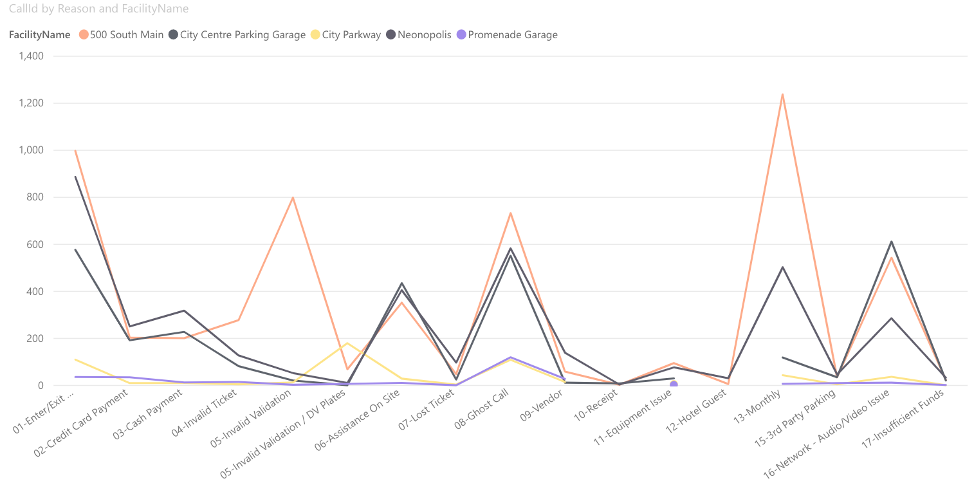“Marrying technology and customer service is our biggest challenge. As the Parking industry evolves, we are constantly striving to strike the balance between in-person contact and automation. That is the core of our effort to provide an excellent customer experience.”

Brandy Stanley
Parking Services Manager for the City of Las Vegas
The City of Las Vegas was built on the customer experience.
Designed to delight the senses, Vegas has it all. From world class dining and entertainment, to heart-pounding gaming experiences, to amusement park rides and outdoor excursions, to premier museums, festivals and concerts, to business conferences and expos, all are crafted to entice millions of visitors every year. Vegas is known as America’s playground, and it lives up to the moniker.
Las Vegas may be the perfect place to examine what some see as a mundane aspect of travel, or daily lives: parking. Here, we examine how some of those that hold the city’s brand closest— its municipal parking administrators— provide a parking experience that is in keeping with what visitors and residents expect.
To deliver that experience, the City of Las Vegas Parking Services (CLVPS) employs a multitude of technological and human resources. In doing so, many lessons have been learned along the way, about what makes an excellent customer experience and how to balance the use of technology and human interaction to achieve it.
This study examines how best to provide support in the instance that customers encounter trouble using technology designed to resolve issues in the lane, help the customer pay, and get on their way, while on-site staff is deployed to handle other tasks.
Case Study Parameters
Focus: An examination of the leveraging of technology to create an optimized parking operation, while providing an excellent customer experience and a high level of customer service.
Locale: Municipal Parking Facilities in Las Vegas, NV. Five garages outfitted with various levels of automation, ranging from partial- to full-automation.
Time Frame: Parking facility use data collected throughout calendar year 2019.

Case Study Philosophical & Tactical Approach
Delivering a great customer experience is rooted in understanding and acknowledging what comprises such an experience. Specifically: Expectation Management, Response and Cycle Times, Value, Consistency, Transparency / Authenticity. It is also informed by business best practices and an ongoing effort to objectively measure and evaluate the performance of the offering.
These paired with active data analysis and interpretation, and the placing of customer service support systems and personnel, were the selected tactics for delivering an excellent customer experience.
Methodology of Study
The examination of data regarding customer interaction with technology and the resulting difficulties they experience; examination of how those difficulties were addressed, managed, and resolved, and what factors comprise the customer experience specific to the CLVPS parking operation that need to be understood and accommodated. This is accompanied by an analysis of trends in customer expectations and what efforts may be deployed to mitigate them.
Data Analysis Approach
This study shows the evaluation of the type of interactions customers had with parking systems and the instances of system failures/issues. It also is an evaluation of the resolution method deployed to assist the customer and a value measurement of impact on the customer experience.
Metrics Used
- Parking help calls made in relation to overall tickets issued/processed.
- Cause and type of help call.
- Instance of Customer Service calls.
- Examination of the issues that generated the need for a customer/user to request help.
Examining the Data
Call Volume: A Direct Measure of Need
873,189: the number of intercom calls Parker’s virtual ambassadors answered in 2019.
Through extrapolation, it is estimated that, intercom call buttons in parking facilities are pressed approximately 85 million times a year in the United States.
13,367: the number of intercom calls Parker’s virtual ambassadors answered for five City of Las Vegas garages in 2019.
Note: 2 of 5 garages were added in November, meaning three garages comprised the bulk of these calls.
While already substantial, this number is expected to rise in the future because the two additional garages are fully automated and full automation tends to drive the need for help calls, which is discussed further below.

Percentage of Issued Tickets Resulting in Intercom Calls

In this data set, intercom calls at partially automated garages occur for 3-4% of issued tickets. Fully automated garages’ help calls occur up to twice as often, at a rate at 4-8%. Such a finding poses the question: are higher rates of intercom calls in fully automated garages due to equipment failure, the absence of an onsite attendant to help guests, or something else?
Management software indicates that intercom calls are seldom a result of equipment failure or technical problems, but rather, user error.
Call Reasons for City of Las Vegas Garages

Software metrics indicate that of the 17 logged call reasons, only two were related to equipment or network errors. The majority of calls is due to human error, or challenges navigating the equipment.
In this data set, less than two percent (<2%) of help calls through the Parker system were related to equipment issues and eleven percent (11%) were related to network issues. In total, only thirteen percent of calls were equipment or network related, while eighty-seven percent (87%) were related to human error.
This is not unique to the City of Las Vegas; these percentages are aligned with data from other parking operations.
“We underestimated the resources needed to continue providing high levels of service after automation, and we weren’t prepared for the impact it had on our business and our customers.”
– Sheri Eggleton, Director of Parking and Transportation Services, Indiana University Purdue University Indianapolis (IUPUI)
Data Conclusions
Thus, it is clear that although PARCS equipment is designed for minimal failures and ease of use for parking guests, a large minority of guests still need help navigating such equipment. Therefore, the need for human interaction persists. Providing live support is essential to delivering an excellent customer experience.
Despite this ongoing need, maintaining an onsite attendant is not cost-effective. This has long been addressed with audio-only intercoms for live customer support. However, a voice-only interface has severe limitations, and can erode the overall customer experience.
Key Findings:
- Automation brings a multitude of convenience and advantages for the operator and the consumer.
- Equipment manufacturers have improved the reliability of hardware, to a point that equipment issues account for less than 2% of help calls.
- While consumers accept the use of technology, they require human interaction at varying rates (2-8%) of transactions.
- Providing the required human interaction via remote ambassador can be cost effective way for an operator to provide a high level of customer service, while leveraging their investment in technology.
Leveraging video intercom technology allows CLVPS to provide this level of customer service by offering instant, face-to-face customer service when guests need it, and redeploying on-site attendants to other functional areas. The video interface allows for the parking ambassador to provide a nuanced approach to helping parking guests. Thus, the likelihood of delivering the right kind of assistance at the right time is higher, which makes for a quicker and more satisfactory resolution of issues.
